Moniek Bloks's Blog, page 57
February 11, 2024
Book Review: Raised to Rule: Educating Royalty at the Court of the Spanish Habsburgs, 1601-1634 by Martha K. Hoffman
*review copy*
Raised to Rule: Educating Royalty at the Court of the Spanish Habsburgs, 1601-1634 by Martha K. Hoffman focuses on the children of King Philip III of Spain and his wife, Margaret of Austria.
They had five children who survived to adulthood and three children who died young. Their eldest daughter, Anne, went on to become Queen of France as the wife of Louis XIII. A second daughter, Maria, died young. The eldest son and heir was the future King Philip IV. The third daughter, Maria Anne, became Holy Roman Empress as the wife of Ferdinand III, Holy Roman Emperor. The second son, Charles, died unmarried at the age of 24. The third son, Ferdinand, became a cardinal. Another son and daughter both died young.
Raised to Rule is an in-depth look at how one raises a future monarch. The little princes and princesses learn from an early age that they have an important role to play, and every part of their education is planned down to the minute. Although the topic is quite interesting, I found the overall text a little boring. It can also be quite complicated, so perhaps it’s not so suitable for the casual reader who is interested in the Spanish royals. Overall, I’d have to say it’s very well-researched but a bit too dry.
Raised to Rule: Educating Royalty at the Court of the Spanish Habsburgs, 1601-1634 by Martha K. Hoffman is available now in the UK and the US.
The post Book Review: Raised to Rule: Educating Royalty at the Court of the Spanish Habsburgs, 1601-1634 by Martha K. Hoffman appeared first on History of Royal Women.
February 10, 2024
Book News Week 7
Book news week 7: 12 February – 18 February 2024

My Mother and I
Kindle – 15 February 2024 (US)

Pomp and Piety: Everyday Life of the Aristocracy in Stuart England
Hardcover – 13 February 2024 (US)
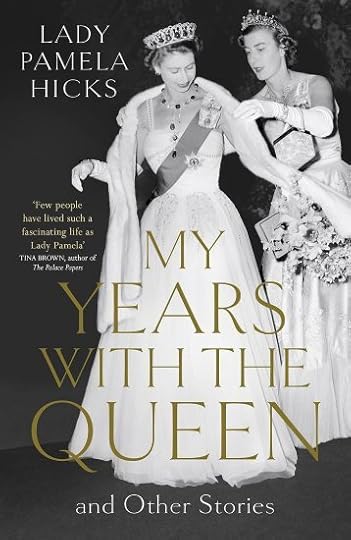
My Years with the Queen: and Other Stories
Hardcover – 15 February 2024 (UK)
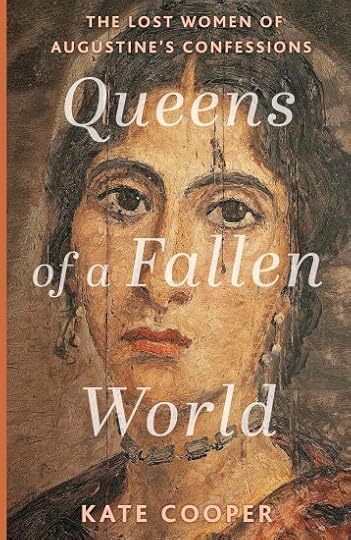
Queens of a Fallen World: The Lost Women of Augustine’s Confessions
Paperback – 15 February 2024 (UK)
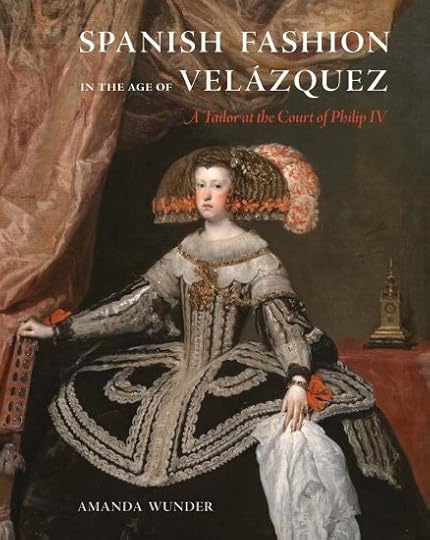
Spanish Fashion in the Age of Velázquez: A Tailor at the Court of Philip IV
Hardcover – 13 February 2024 (UK)
The post Book News Week 7 appeared first on History of Royal Women.
February 9, 2024
Buried in the Tower: St Peter ad Vincula
The Chapel Royal of St Peter ad Vincula, based inside the Tower of London, is the final resting place of several royal women, all of whom have been executed.
The current structure dates from 1520, although a church probably stood on the site from the 12th century. The new structure replaced a building that was destroyed by fire in 1512.
Click to view slideshow.Although several famous prisoners found their final resting place, the first royal woman to find her last resting place there was Anne Boleyn, the second wife of King Henry VIII. She was executed in 1536 at the Tower. Afterwards, the ladies-in-waiting covered Anne’s body. Her head was wrapped in a white cloth, although it quickly turned red from the blood. They carried the body the seventy yards or so to St Peter ad Vincula. Inside, her clothes were removed, and her body was placed in an elm chest. Here, she was buried, close to the men who had been accused alongside her.1
It would not be long before she was joined by Margaret Pole, Countess of Salisbury. The niece of King Edward IV of England was executed in 1541 at the age of 67. In 1542, they were joined by another Queen, Catherine Howard, the fifth wife of King Henry VIII. Her lady-in-waiting, Jane Boleyn, was executed alongside her and was the sister-in-law of Anne Boleyn. Catherine was the first to be executed, and after her head and body were wrapped up and taken to St Peter ad Vincula, the bloody straw was cleared to make way for Jane Boleyn.
Lady Jane Grey, a great-granddaughter of King Henry VII and perhaps better known as the Nine Days’ Queen, was executed in 1554. After her execution, her body was reportedly left on the scaffold, and one observer commented on the extraordinary amount of blood. It is unclear what caused the delay in burying Jane’s body, but she was eventually buried before the evening fell.2
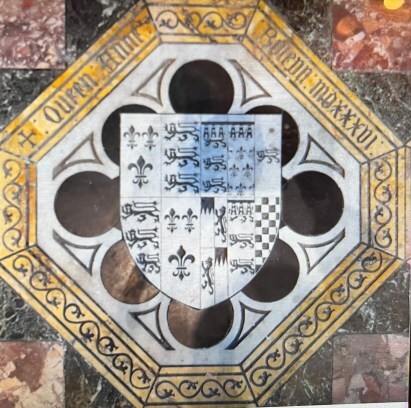 Photo courtesy of the guide
Photo courtesy of the guideDuring restoration works in the 1870s, several remains were unearthed. A “tall and aged female” was supposedly identified as Margaret Pole. She was placed in a leaden coffin and respectfully reinterred.3 Close to Margaret were the supposed remains of Jane Boleyn. Anne Boleyn’s supposed remains were also found and described as belonging to “a woman between the ages of twenty-five and thirty who had a delicate frame with a small neck.”4
Catherine Howard’s remains were not identified, but due to her young age, her bones may have “already become dust.”5 The same is likely for Lady Jane Grey, who was also still in her teens.
St Peter ad Vincula can be visited as part of the Tower of London.
The post Buried in the Tower: St Peter ad Vincula appeared first on History of Royal Women.
February 8, 2024
The Cullinan V Brooch
The Cullinan V Brooch consists of a “heart-shaped stone in a pierced collet and claw setting, mounted on a fine radiating platinum web, in symmetrically scrolling and foliate millegrain and pavé-set brilliant border.”1
Embed from Getty ImagesThe heart-shaped stone was one of the six numbered diamonds given to Queen Mary by the government and people of the Union of South Africa in 1910.
Embed from Getty ImagesIt could be worn in several ways. It could be a brooch, added for to the stomacher, suspended from nan VIII Brooch, or worn together with the Cullinan VII pendant. It could also be set on a tiara. Queen Mary also devised something of her own; she wore it on her coronet during the 1937 coronation.
The brooch was bequeathed to Queen Elizabeth II in 1953 and was frequently worn by her.
The post The Cullinan V Brooch appeared first on History of Royal Women.
February 6, 2024
Schloss Dachau – A Bavarian summer residence
Schloss Dachau, in the city of Dachau in Germany, was once the summer residence of the rulers of Bavaria.
The original castle was built around 1100 but this was demolished between 1398 and 1403. Construction of the new structure began in 1546 under William IV, Duke of Bavaria. This was completed in 1577. A redesign was ordered in 1715 by Maximilian II Emanuel, Elector of Bavaria. Three of the four wings of the castle were demolished in the 19th century after they had suffered damage during the time of Napoleon. The remaining wing is the southwest wing.
The palace is open to the public, although it’s not quite as straightforward as simply entering. One can enter the banqueting hall after ringing the doorbell and obtaining a ticket in the cafe. This banqueting hall dates from the 1560s.
 © Bayerische Schlösserverwaltung
© Bayerische Schlösserverwaltung(Photo: Maria Scherf)
www.schloesser.bayern.de
The gardens are open to the public and have a lovely view.
 © Bayerische Schlösserverwaltung
© Bayerische Schlösserverwaltung(Photo: Veronika Freudling)
www.schloesser.bayern.de
 © Bayerische Schlösserverwaltung (Photo: Maria Scherf/ Andrea Gruber)
© Bayerische Schlösserverwaltung (Photo: Maria Scherf/ Andrea Gruber)www.schloesser.bayern.de
Plan your visit here.
The post Schloss Dachau – A Bavarian summer residence appeared first on History of Royal Women.
February 5, 2024
Taking a look at Princess Louise of Belgium
Princess Louise of Belgium was born on 6 February 2004 as the daughter of Prince Laurent of Belgium and Princess Claire (née Coombs). She is their eldest child, and she was 11th in the line of succession at the time of her birth.
Embed from Getty ImagesEmbed from Getty ImagesAt the time, her father told the press she would raised like any other child. He said, “The closer you are to your child, the closer the bonds are. It is different if you leave it to others.”1 Her godmother is Princess Margaretha of Liechtenstein (née of Luxembourg). In 2005, her twin brothers Nicolas and Aymeric were born. She and her brothers attended the Jean Monnet Lyceum in Uccle.
Embed from Getty ImagesPrincess Louise does not appear in public often. She is currently studying Liberal Arts and Sciences at Maastricht University in the Netherlands and is now 15th in the line of succesion.
Embed from Getty ImagesThe post Taking a look at Princess Louise of Belgium appeared first on History of Royal Women.
February 4, 2024
Amytis of Babylon – The Queen’s Hanging Gardens of Babylon
Amytis of Babylon was Queen consort to King Nebuchadnezzar II. It was said that Queen Amytis was the reason that King Nebuchadnezzar created the famous Hanging Gardens of Babylon.[1] However, it is still unclear if the Hanging Gardens of Babylon existed.[2] As with the existence of the Hanging Gardens of Babylon, Queen Amytis still remains elusive. There are very few facts that we know about her.
In circa 640 B.C.E., Queen Amytis of Babylon was born in Ecbatana. Her father was Cyaxares, the King of the Median Empire.[3] Her mother is unknown. Her brother was Astyages, who would become the last King of Media.[4] She was the aunt of Queen Mandana of Anshan and Amytis Shahbanu, the Queen of Persia. Therefore, Queen Amytis of Babylon was the great-aunt of King Cyrus the Great, who later overthrew her Chaldean Dynasty and founded the Achaemenid Dynasty.
King Cyaxares wanted to defeat the Assyrian Empire.[5] In order to destroy the mighty empire, he had to join forces with the Babylonian Empire.[6] He made an alliance with King Nabopolassar of Babylon.[7] Together, they defeated the Assyrian Empire.[8] Shortly after the fall of the Assyrian Empire, King Nabopolassar died in 605 B.C.E. His son, Nebuchadnezzar II, became the next king of Babylon. King Cyaxares offered his daughter, Princess Amytis, to the new king, Nebuchadnezzar II.[9] Because King Nebuchadnezzar II was beginning his reign, he did not want to start a war with the Medes.[10] He accepted the marriage.[11]
In circa 605 B.C.E., Princess Amytis travelled from Ectbatana to Babylon and married King Nebuchadnezzar II. Amytis then became Queen of Babylon.[12] King Nebuchadnezzar II loved her greatly, and she became his favourite wife.[13] According to a famous story, Queen Amytis missed her homeland.[14] King Nebuchadnezzar II wanted to please her.[15] He built the infamous Hanging Gardens of Babylon as a gift for her.[16] The Hanging Gardens of Babylon was known as one of the Seven World Wonders.[17] Some ancient writers, like Diodorus Siculus, claimed to have seen it.[18] However, some modern historians are doubting its existence.[19] Nevertheless, scholars are still searching for the lost Hanging Gardens of Babylon.[20]
Aside from the tale of the Hanging Gardens of Babylon, much of Queen Amytis’s story has been lost. It is unclear if Queen Amytis had children with King Nebuchadnezzar II.[21] We do not know if she wielded any political influence on her husband. In circa. 565 B.C. E., Queen Amytis died in Babylon. If it was not for the Hanging Gardens of Babylon, Queen Amytis’s name would have been lost to us in history.
Sources:
Beaulieu, P.-A. (1998). Ba’u-asītu and Kaššaya, Daughters of Nebuchadnezzar II. Orientalia, 67(2), 173–201. http://www.jstor.org/stable/43076387
Campbell, P. (2016). The Story of Civilization: VOLUME I – The Ancient World. United States: TAN Books.
Coren, C. M. (2023). “Hanging Gardens of Babylon”. Salem Press Encyclopedia.
Nardo, D. (2007). “Amytis (Flourished Late Seventh Century B.C.E.)”. Ancient Mesopotamia. NY: Greenhaven Press, p. 27.
Yamauchi, E. (2022). “Cyaxares”. Salem Press Encyclopedia.
[1] Yamauchi, 2022
[2] Coren, 2023
[3] Yamauchi, 2023
[4] Yamauchi, 2023
[5] Yamauchi, 2023
[6] Nardo, 2007
[7] Yamauchi, 2023
[8] Yamauchi, 2023
[9] Yamauchi, 2023
[10] Campbell, 2016
[11] Nardo, 2007
[12] Nardo, 2007
[13] Campbell, 2016
[14] Campbell, 2016
[15] Campbell, 2016
[16] Campbell, 2016
[17] Coren, 2023
[18] Coren, 2023
[19] Coren, 2023
[20] Coren, 2023
[21] Beaulieu, 1998
The post Amytis of Babylon – The Queen’s Hanging Gardens of Babylon appeared first on History of Royal Women.
February 3, 2024
Book News Week 6
Book news week 6: 5 February – 11 February 2024
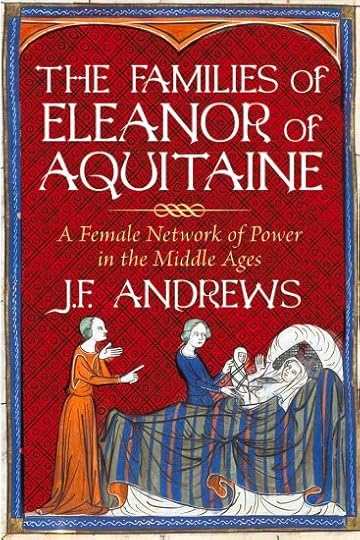
The Families of Eleanor of Aquitaine: A Female Network of Power in the Middle Ages
Hardcover – 6 February 2024 (US)

The Queen’s Dolls’ House: Revised and Updated Edition
Hardcover – 8 February 2024 (UK)
The post Book News Week 6 appeared first on History of Royal Women.
February 2, 2024
Book Review: VERA: Princess of the Imperial Blood Vera Konstantinovna by Paul Gilbert
Princess Vera Konstantinovna of Russia was born on 24 April 1906 as the daughter of Grand Duke Konstantine Konstantinovich of Russia and his wife, Grand Duchess Elizabeth Mavrikievna (born Princess Elisabeth of Saxe-Altenburg). She had six brothers and one surviving sister.
She grew up in the splendour of Imperial Russia and was just eight years old when the First World War broke out. During the war, her father died of a heart attack in her presence, and her brother Prince Oleg was killed in action. Three other brothers were killed by the Bolsheviks in 1918, alongside Grand Duchess Elizabeth Feodorovna. Her mother had initially been unwilling to leave Russia, but Vera eventually left for Sweden, along with her brother George, her nephews (Prince Teymuraz Constantinovich and Prince Vsevolod Ivanovich of Russia) and her nieces (Princess Natalia Konstantinovna Bagration-Mukhransky and Princess Catherine Ivanovna of Russia) at the invitation of Queen Victoria of Sweden.
She would spend the rest of her life in exile, first in Sweden, then Belgium and Germany and later the United States. During the Second World War, she worked as a translator. She died in New York in 2001.
VERA: Princess of the Imperial Blood Vera Konstantinovna by Paul Gilbert tries to bring Princess Vera back to life but fails to do so. The chapters are written by several people, including Princess Vera herself, as she describes her father and her family. This leads to information being repeated several times over. The information on Princess Vera is also pretty limited, so having it repeated made no sense. It probably would have been best if the information had been merged to form a single narrative rather than this. The only redeeming quality is the number of photographs, which is great.
VERA: Princess of the Imperial Blood Vera Konstantinovna by Paul Gilbert is available now in the US and the UK.
The post Book Review: VERA: Princess of the Imperial Blood Vera Konstantinovna by Paul Gilbert appeared first on History of Royal Women.
Watch the Firebrand trailer here
Firebrand is based on Elizabeth Fremantle’s novel Queen’s Gambit and focuses on her life as the sixth and final wife of King Henry VIII of England. Filming began in April 2022, and the film premiered at the 2023 Cannes Film Festival.
Alicia Vikander stars as Katherine Parr, while Jude Law stars as King Henry VIII. The film will be released in the US on 21 June 2024.
The post Watch the Firebrand trailer here appeared first on History of Royal Women.



